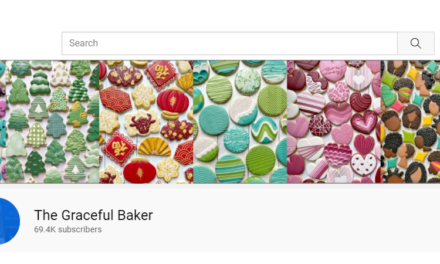Programmatic ad spend is on the rise like never before. By the end of 2018, the industry experts predict it to reach $46 billion in the U.S. By 2020 ad spend is expected to double to a whopping $86.2 billion. On the surface, the future of ad tech ecosystems equipped with programmatic capabilities may seem certain, however, insiders are aware of several industry gaps, which still make successful campaign execution problematic.
Statistics, dashboards, and tools for campaign optimization are at everyone’s disposal. The problem is, the picture of measured KPI and ROI they provide can be far from the true state of things. Today, advertisers and publishers should be well-informed and prepared in order to raise the brand in ever-changing ad tech reality.
#1 Reach and Frequency
The even distribution (frequency capping) was aimed to provide advertisers with an ability to distribute impressions to the user evenly, just enough to be memorable but not for causing annoyance. The advertiser may easily tune the frequency to the necessary number in the dashboard, put the campaign on autopilot, and get satisfactory results in the report later.
Indeed, the achieved campaign reach on the micro-level will show different frequency numbers to those selected in settings. While some users may be overwhelmed with impressions, the others only see them once or twice, and that’s when money gets spent in vain.
Ad tech providers should be able to fix the algorithms to ensure such one-time impressions are not taking place on their ad platforms. Ideally, advertisers will be able to correct campaigns on the user-scale, so their money doesn’t go to waste.
The lack of control over the reach and frequency of served ad impressions to every single user may be resolved by serving certain campaigns through direct programmatic, utilizing deal IDs, or bringing programmatic in-house.
#2 Viewability
As a rule, around 53% of all served ad impressions go unnoticed by users. Depending on technologies where impressions are served the number can be even lower. A large ad banner that takes 2-5 seconds to load can immediately lose 25% of viewers right away. The heavy creative causes serious problems, and even if an advanced ad platform ensures 90% viewability, there’s no guarantee that won’t be cut in half because of slow creative.
In such cases, IAB recommends you select ad platforms which measure transactions based on viewable CPMs and control impressions with third-party verification technologies. It would also be a good practice to diversify creatives and optimize their formats, resolutions, and weight as much as possible.
#3 Brand Safety
According to PPC Protect that in 2017 that in 2017, over 20% of total worldwide ad spend was wasted on fraud, roughly, one in every five per user clicks was made by fraudulent bots. As soon as real-time-buying appeared, click fraud, click hijacking, and app install fraud completely flooded ad platforms. According to estimations, today over 30% of all ad traffic can be regarded as suspicious.
At this point, advertisers who care about brand safety are not defenseless. Preventing invalid traffic is now possible (by placing with IAB’s ads.txt on domains), it’s function is verifying and accepting only authorized publisher’s inventory.
Apart from fraud, there’s always a risk an ad to appear near inappropriate content that may damage the brand’s reputation. In this case, advertisers should act proactively, applying customized blacklists which will keep their ad away from unwanted inventory.
#4 Intermediaries
Because of the ad fraud that occasionally takes place, advertisers can’t trust publishers by default. This increased demand for trust in ad tech sphere has given birth to certifying centers, the companies that work as arbitrators between demand and supply parties. Google and Facebook function as intermediaries between the sites that have audiences and advertisers who need human visits on the websites. (All transactions are processed with third parties like Paypal, which also need to be paid their fees.)
Intermediaries are almost unavoidable in ad tech unless new technologies like Blockchain change the game. Blockchain is a reliable container for information that can be accessed by all parties universally and verify the origins of the clicks. Luckily, blockchain-based platforms are already appearing worldwide.
#5 Ad Blocking
It is expected that by the end of 2018 around 35% of internet surfers will be using ad-blocking browser extensions. Around 67 million people use ad blockers as browser extensions working on the desktop, with only 24 million blocking the ads on smartphones.
Shifting the focus toward mobile and in-app advertising for advertisers looks like an obvious path to follow. However, it’s also worth it to remember the value of the creative. There are ad types that show particular resistance to ad blocking, e.g., rewarded ads offer the user to exchange ad views for valuable items in the game/app or engaging playable format, which features free-to-try demo games.
#6 Transparency
The ad platforms are continually modernizing, but transparency issues remain unresolved.
The advertisers who pay, for example, $100 for 1000 ad impressions don’t really know how this money is distributed, which part of the budget is received by the publisher and what is taken by the ad platform and other intermediaries.
The same thing happens with data verification providers and data management platforms. The advertiser may know the price for user data, but nothing stays in the way of DSP adding the margin to the sum.
Thus, it’s fundamental for advertisers to choose providers who are open in their practices, and are willing and ready to explain the mechanisms behind technology operation. Ultimately, platforms should comply with laws that ensure the company aligns with modern business transparency demands and puts equal pressure on its ad tech vendors.
#7 Tech Fragmentation
The ad tech world is way too complex and the fact that every participant typically collaborates with dozens of vendors illustrates the picture. Roughly 90% of advertisers claim they’d cut outhalf of the vendors if it didn’t put effectiveness at stake.
While such collaborations bring diversification benefits, they may also create obstacles such as reporting inconsistencies and tech disparities. With every new partner added the possibility of trouble grows.
Consolidation—as opposed to fragmentation—is promised to balance ad tech soon. So far, advertisers who refuse to wait for changes are rapidly growing their own in-house decisions, bringing DSPs, measurement tech, and core marketing channels under one roof.
Conclusion
When a brand pays attention to the quality of its ad tech partnerships and cares about better control over how and where their campaigns are served, it inevitably leads to the improvement of all performance indicators.
Advertisers need to react promptly to all changes of KPIs in the process, and understand the effectiveness of every creative and user segment. For the brands that strive to make the marketing processes even more flexible and transparent, in-house is a best option as it is able to grant a control over all internal expenditures, marketing channels, and communication with customers.






